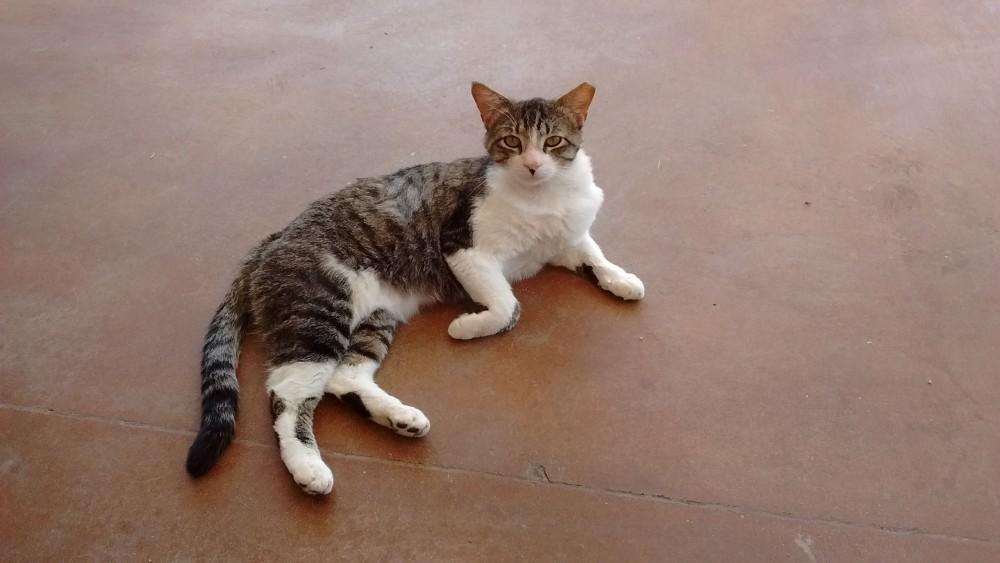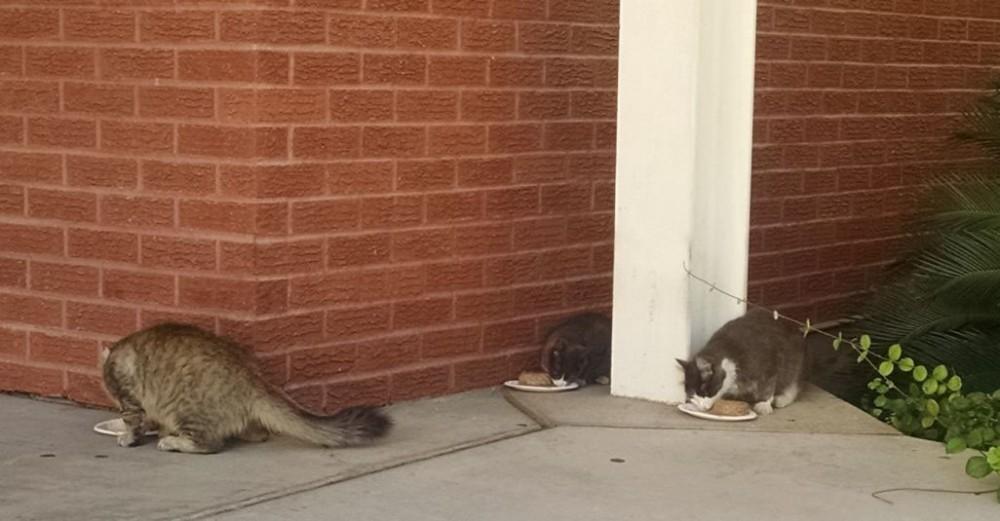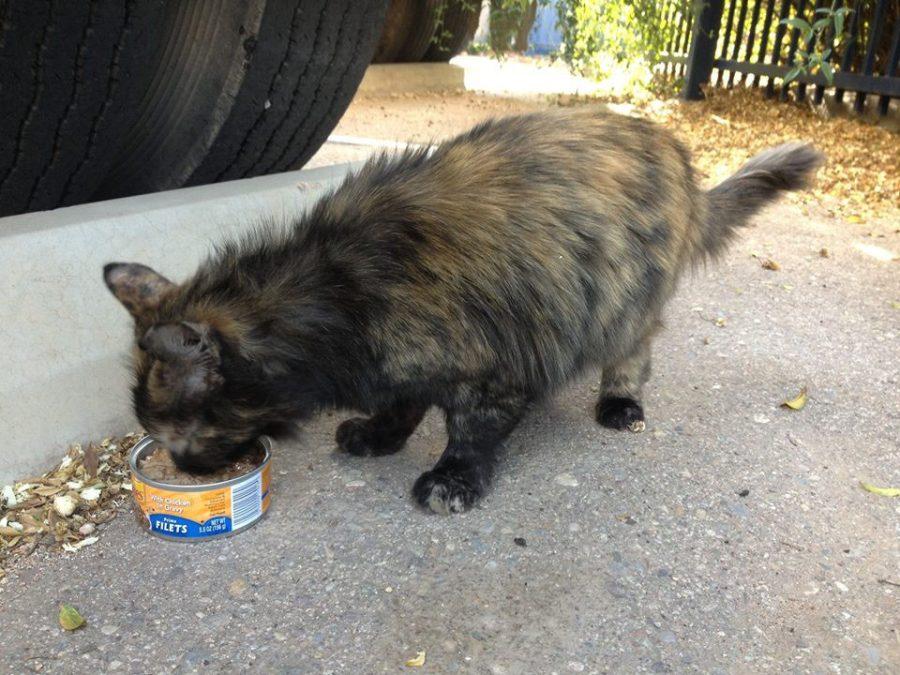Sergio is the big cat of the yard, a leader. Oreo is a trap-savvy mama who knows her way around town. Dumbledore is just another guy trying to get by with what he has. And a few cool cats like Melman become celebrities on the street.
The University of Arizona campus is an unexpected home for many stray and feral cats, roaming around side streets, hiding in the dense bushes and simply living their lives among us. That’s where CATS4Critters comes in.
CATS4Critters is a five-year-old UA club of independent people working to improve the cats’ lives by helping them get fed, sheltered and spayed or neutered.
RELATED: UA student raises sugar gliders and the bar
“It’s a little hard to say, right now we have a few — six or eight members who are active,” said CATS4Critter co-founder and club advisor Susan Miller.
Miller estimates there to be around 40 known stray cats living on campus and many new ones that usually come in at the end of spring semester.
Two sisters who are club members, Jennifer and Dana Von Berg, said they wonder if this is because students are leaving them behind after they graduate.

“There are a lot of good students who wouldn’t do that, but there are some,” Dana Von Berg said. “We kind of think that Neville and Dumbledore might have been left behind. It’s a theory that we have.”
Dumbledore and Neville were cats on campus that were recently rescued by the club and accepted into the local Hermitage No-Kill Cat Shelter and Sanctuary. The two appeared to be comfortable around humans, more stray than feral.
Unlike strays, which are pets that have been abandoned, feral cats like Sergio and Oreo have had little to no socialization when they are young. That makes them avoidant of humans and almost impossible to be adopted out.
The best that the club can do with feral cats is humanely trap them so they can be neutered and then return them to the street. This is done to decrease overpopulation. An indicator a cat has been TNR’d — trap, neutered and released — is a clipped ear.
“When Dumbledore first showed up, they were really leery of him and he’d have to eat last,” Jennifer said, describing how many of the cats have made their own colonies with their own hierarchy system.
However, that made Dumbledore stand out, and when he was accepted into the Hermitage cat shelter, veterinarians found he had feline immunodeficiency virus, an autoimmune disease in cats that is usually transmitted through biting. He is now doing well in the shelter’s FIV rooms, as cats with FIV can live long, healthy lives with proper care.
Neville was caught in a TNR trap and is also ready to be adopted at the shelter.
David Bishop, Hermitage’s president of the board of directors, CATS4Critters club member and owner of eight cats himself, said he’s glad the two cats were able to enter the shelter.
“The Hermitage has a pretty great reputation of finding homes for cats that have sorts of things that make it harder to adopt …” he said. “We are also Arizona’s first no-kill shelter.”
The Von Bergs and Bishop were members who had independently been helping the cats on their own before coming across the CATS4Critter club.
The club’s email listserv allows members to keep each other informed about the cats and keep them posted on their progress with things like TNRs. Since cats are cautious creatures, sometimes catching one can take months, even up to a year in some cases.
CATS4Critters would like to know more about the cats on the UA main campus and those feeding them, since a majority of the members are focused in the north campus area. So far the group knows there are cats around the Main Library, McKale Center, garages like Cherry and the Park Student Union area.
Cats have been on campus for years. One cat, Melman, a good-natured feline who hung around the Health Sciences Library for at least six years, was particularly memorable.

“He was friendly, people would come by to pet him and leave him food. A lot of people loved him, and finally someone found someone who was interested in taking him home,” Bishop said. “He’s doing very well.”
The cats seem to make a positive impact on many lives here, but Bishop believes there are some people who don’t like them for various reasons, including that they sometimes kill songbirds.
One problem CATS4Critters ran across last year was someone throwing away the cat food they left out north of campus. There, the club feeds over a dozen cats.
RELATED: Keep hanging in there, cats
“I hope that the UA community would understand that the cats are here because nobody else wanted them and the ones that are feeding them are trying to take care of them because they feel that they deserve to be cared for,” Bishop said.
From enduring the dangerous Arizona summer heat to finding shelter in the cold monsoon and winter seasons — along with construction, cars and predators like coyotes — it can be difficult for cats to survive. It makes one realize that Sergio, Oreo, Blackberry, Hermione, Bessie, Millie and many of these cat are all members of the Wildcat family who need help, and CATS4Critters’ members are prepared to do what they can, from keeping their car trunks full of cat food to fostering a few of them on their own.
“They’re wonderful little cats. They’re just homeless cats that we just want to feed and make their lives a little easier,” Jennifer Von Berg said.
Follow The Daily Wildcat on Twitter









